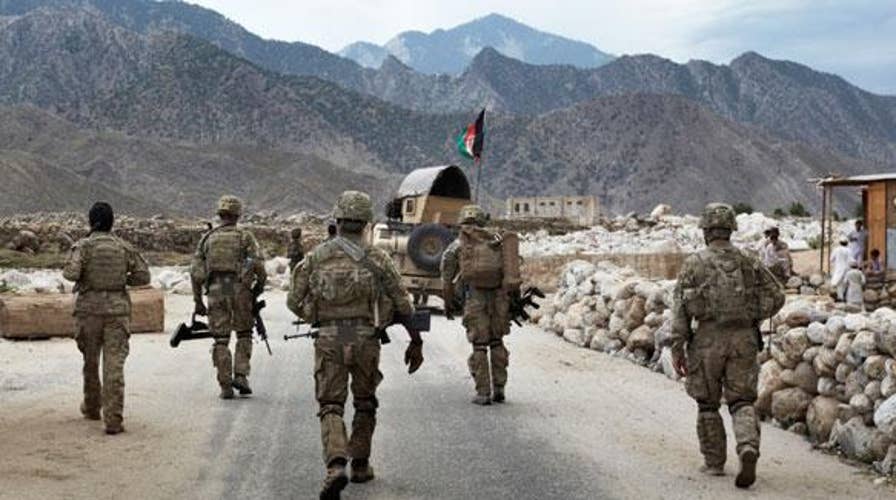America's longest war: US remains in Afghanistan
Jennifer Griffin reports on the ongoing conflict and the State Department's suspension of security aid to Pakistan.
The U.S. military dropped more bombs in Afghanistan in 2017 than in 2012 when the U,S, military had nearly 100,000 troops on the ground, according to newly released airstrike figures from the Air Force.
The spike in airstrikes began after President Trump took office in late January.
As the war against ISIS winds down in Iraq and Syria, more Air Force jets and drones are being sent to Afghanistan to supply close air-support to U.S. troops moving closer to the front lines.
“This is allowed under the authorities that I was granted under the new U.S. strategy. I could not do that previously."
Trump approved the deployment of 3,000 more U.S. troops to Afghanistan after rolling out a new strategy in August as U.S. involvement in Afghanistan approached its 17th year. Another 800 soldiers are expected to arrive from Fort Benning, Ga. in April to train Afghan forces decimated in the past few years by the Taliban and an ISIS-affiliate in eastern Afghanistan. The new U.S. troops will also be used to call in more airstrikes to support their Afghan partners.
The influx of troops will bring U.S. military involvement in Afghanistan to roughly 15,000 troops, a level not seen since 2014, but a far cry from the roughly 100,000 on the ground in 2010 after then-President Obama ordered a surge of forces.
The U.S. Air Force says more than 4,300 bombs were dropped last year in Afghanistan, far fewer than the nearly 40,000 dropped against ISIS in Iraq and Syria over the same period.
A significant number of the air strikes in Afghanistan targeted an ISIS-affiliate, responsible for recent suicide attacks in Kabul killing more than 100 civilians.
“President Ghani said, he believes we have turned the corner and I agree,” Army Gen. John W. Nicholson Jr., the top U.S. commander in Afghanistan, said during a Pentagon press briefing via teleconference from Kabul late last year.
Nicholson wants to go after the Taliban’s major revenue sources, namely the poppy crop used to make narcotics including heroin, in much the same way the US relentlessly attacked major funding sources for ISIS in Syria -- oil.
“This is allowed under the authorities that I was granted under the new U.S. strategy," Nicholson said. "I could not do that previously."

